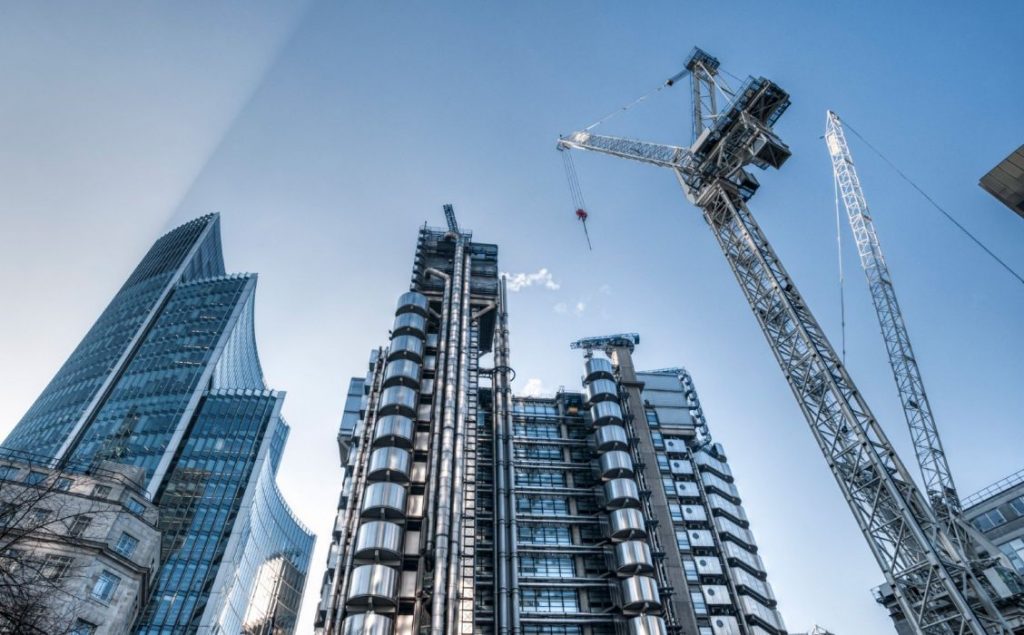For those of us located in London, we are all too familiar with the sights of cranes littered across the skyline. Construction is everywhere. All the time. Non-stop. London never stops expanding. It’s an ever growing urban behemoth with an additional 76 skyscrapers set to be built by the end of 2019. Needless to say, the construction industry is booming. Unfortunately, the environment is not. The globe is warming, the climate is changing more rapidly than ever, and we are in need of an immediate change.
In a recent article published on his blog Gates Notes, Bill Gates writes about the future of construction, the threats it poses to the environment, and potential solutions. By the year 2060, the world will have added 2 trillion square feet of buildings, which for us Europeans is approximately 200 billion square meters. That’s the equivalent of building New York City once a month, every month, for the next 40 years. That equates to a lot of steel and concrete, both of which are major contributors to global carbon emissions. Although there are many innovative companies working on zero carbon materials, or even carbon negative materials such as Blue Planet, the process of integrating these into global construction will not happen overnight. It’s safe to say that traditional building materials will hold the majority of materials used in developments for the foreseeable future. Somehow, current construction processes need to be optimised for efficiency to bring down total emissions and waste related to new developments. So, before the world is able to adopt 100% zero carbon materials in construction, something needs to change in the way we build our cities, and it needs to change now. Although the UK, and many other countries, have committed to zero carbon by 2050, there is a gap between now and then. A gap that needs to be addressed.
“Right now, 80-90 percent of emissions come from running a building over its lifetime, but as we use cleaner sources of electricity and make buildings more efficient, the emissions from construction materials will represent a larger share of the total”.
There is no silver bullet for achieving complete decarbonisation. A range of techniques, tools and methodologies need to be used in conjunction.
How do we tackle this?
At Qflow, we aim to do our bit by optimising the use of resources used on construction sites, eliminating unnecessary waste, and ensuring environmental standards are met. We do this by collecting and monitoring data on waste and materials that come in and out of construction sites as well as monitor air quality and noise pollution on site. This data is then processed and returned to our clients in the form of actionable insights to enable them to work more sustainably and efficiently.
We don’t take the climate crisis lightly, which is why our mission is to make a change NOW. Our platform is easy for construction companies to adopt and integrate into their current workflow which provides them with instant results.
Don’t get me wrong, we are a huge proponent of ambitious companies addressing the long-term challenges of zero carbon construction. Ultimately, zero carbon is the goal and without such innovation, the environment will not be able to sustain the growth of our population. However, the reality of these ambitious innovations is that they take time to implement on a global scale. Particularly when it comes to something like construction materials that must support great structures over a long period of time. Not only does it require a lot of work in developing these materials, but there is also a need for popular trust in them. Both of which take time to build and develop. Unfortunately, we don’t have the luxury of time. The process of decarbonising construction will not allow for us to go from where we are today to complete decarbonisation in one step. It’s a process that requires adaptation every step of the way.

To summarize, we need to figure out how to build our cities in a much more sustainable way. There isn’t time to wait for global adoption of innovative, recycled materials. We need to learn how to use current materials in the most efficient way possible in order to support future construction projects. The way to do that is through data. By optimising the use of environmental data, we can unlock new ways to build in a way that benefits the people and environment.
What are your thoughts on innovation in construction? Do we have time to wait for global adoption of new innovative resources? Or do we need to see more immediate change?
If you want to read more about our mission to create a sustainable future in construction, head over to our vision page or check out our blog for more articles. If you have any input or thoughts, feel free to drop us a message and let us know your thoughts

